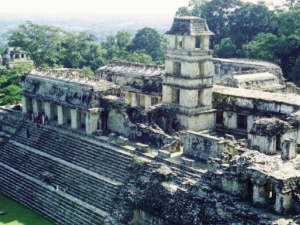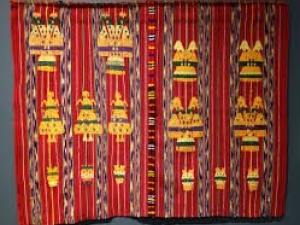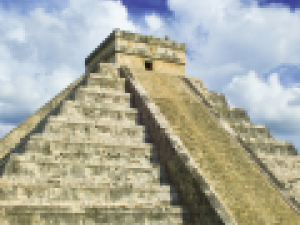K’iche’ is one of the most common indigenous languages in Latin America, spoken by about 1 million Maya in the western Highlands of Guatemala, the heartland of Maya culture. By learning to speak modern K'iche, which dates back to the pre-Columbian sacred book of the Maya, the Popol Wuj, students study the language in its cultural as well as historical contexts. Due to the precarious status of minority languages in Latin America, K’iche’ Maya appeals to students interested in issues of language maintenance in a globalized world, language planning, multilingualism, language diversity, and linguistic human rights. K’iche’ Maya courses are made possible by the Duke-UVA-Vanderbilt Partnership for Less Commonly Taught Languages and are taught “live” via videoconference by Vanderbilt instructor Mareike Sattler (mareike.sattler@vanderbilt.edu).
The course sequence in K'iche' Maya is designed to introduce students to three core content areas: K’iche’ language, Maya linguistics, and Maya culture. By combining language and linguistic study, students can understand complexities, like the relationship of sound to syntax, and language to literature, in an understudied cultural context. In this manner, the study of an important indigenous language from Latin America can contribute to their coursework in other areas, especially linguistics, anthropology, literature, and Latin American studies.
Duke requires all students demonstrate proficiency in a foreign language at the intermediate or advanced level. Courses suitable for meeting this requirement are designed with an FL (Foreign Language) curriculum code. If you plan on satisfying the FL requirement with K’iche’ Maya, you must take three courses (KICHE 101, 102, and 203 or KICHE 102, 203, and 204).
The course description and placement guidelines that follow should help you choose the proper gateway course given your background. K’iche’ Maya courses fulfill the general education foreign language (FL) requirements when beginning at the elementary level. There are no AP, IB or SAT placement tests for K’iche Maya. Courses are taught at Vanderbilt University, with Duke students participating via video conference.
| If you have this background or experience: | You should take this course: |
|---|---|
Elementary K’iche’ Maya – 100 level courses |
|
|
Kiche 101: Elementary K’iche’ Maya I – An introduction to essential elements of the language and aspects of Maya culture. Emphasis is on active language production to develop basic conversational skills for everyday interactions. |
|
Kiche 102: Elementary K’iche’ Maya II – Second semester building on skills learned in Kiche 101. Continue developing basic conversational skills for everyday interactions. |
Intermediate K’iche’ Maya – 200 level courses |
|
|
Kiche 203: Intermediate K’iche’ Maya I - This course develops greater competencies in writing K’iche’ and translating to/from K’iche’. Covers more advanced grammar (verb modalities) and broader range of scripts (colonial vs. modern orthography). Research conducted in K’iche’ using Oral History archives at the University of New Mexico. |
|
Kiche 204: Intermediate K’iche’ Maya II – Students read a variety of primary sources in K’iche’, dating back to the 16th century to the present, and discuss the socio-historical context of the language. Primarily a translating class using philological methods. |




